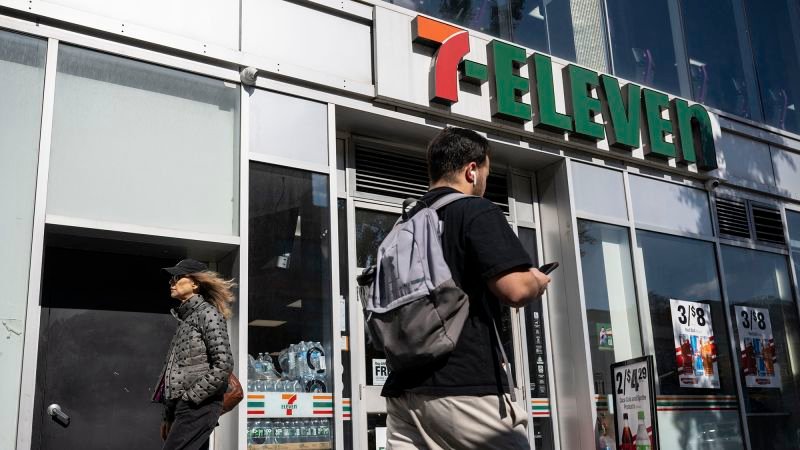Seven & I Holdings, the parent company of convenience store chain 7-Eleven, announced the closure of 444 “underperforming” locations across North America. The closures are attributed to a variety of issues including slowing sales, declining traffic, inflationary pressures, and a decrease in cigarette purchases. The specific list of closing locations was not immediately released, but this amounts to 3% of the chain’s total portfolio, which includes more than 13,000 stores in the US, Canada, and Mexico.
In its earnings report, Seven & I noted the North American economy is robust overall but mentioned a more cautious approach to consumption from middle- and low-income earners due to inflation, high interest rates, and a deteriorating employment environment. These factors led to a 7.3% decline in traffic in August, following six consecutive months of declines. Cigarette purchases, once a major sales category for convenience stores, have fallen 26% since 2019, with a shift to alternative nicotine products like Zyn not completely making up for the difference. As part of its growth strategy, 7-Eleven continuously reviews and optimizes its portfolio, opening stores in locations where customers demand more convenience.
According to retail industry analyst Neil Saunders, the 444 closures represent a “gentle pruning of the chain” to maintain efficiency and profitability. Locations being closed likely experienced a significant decline in foot traffic and customers due to rising food prices and reduced spending by consumers. Increased competition from online and value stores may have also contributed to the closures as consumers seek lower prices. Despite the closures, 7-Eleven plans to continue investing in its food offerings, which have become the highest sales category and a top draw for customers in the United States.
The latest financial results from 7-Eleven come at a time when the company is facing a takeover offer from Couche-Tard, the owner of Circle-K, who increased their bid by $8 billion to $47.2 billion. The competition in the convenience store industry is fierce, with competitors like Wawa and Sheetz earning higher customer satisfaction scores for their overall offerings compared to 7-Eleven. Despite the challenges faced by the chain, there are plans to continue investing in food offerings and optimizing the store portfolio to ensure growth and profitability in the future.
Overall, the closures of underperforming 7-Eleven locations across North America are part of a strategic move to address declining sales and shifting consumer behaviors. As the chain adjusts to economic challenges and changing consumer preferences, investments in food offerings and a focus on optimizing the store portfolio will be key to driving growth and maintaining profitability in the competitive convenience store industry. With the potential takeover offer from Couche-Tard on the table, the future of 7-Eleven and its ability to adapt to evolving market conditions remain uncertain but reflective of broader trends in the retail sector.











